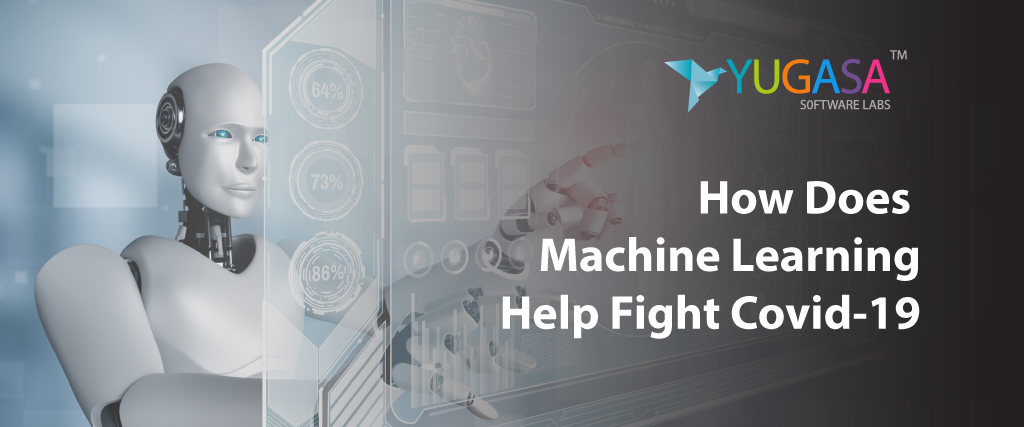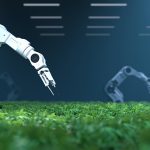Machine Learning: COVID-19 is a global health crisis, more than 40 million people are infected and caused more than 1.12 million deaths (as of October 21, 2020) worldwide.
The resulting impact on health systems is that many countries have exceeded their resources to mitigate the spread of the pandemic.
Several efforts are already in place to take advantage of artificial intelligence in the fight against the coronavirus.
Some of these methods include automatically measuring the temperatures of people in public places, diagnosing COVID-19 infections from chest x-rays, and using machine learning algorithms to predict the spread of the virus.
An introduction
Machine Learning is a section of artificial intelligence, where the session refers to the ability of IT systems to independently find solutions to problems by recognizing patterns in databases.
In other words: Machine Learning enables IT systems to recognize patterns based on existing data sets and algorithms and develop suitable solution concepts. Therefore, in Machine Learning, artificial knowledge is generated from experience.
The system can perform the following tasks using Machine Learning:
- Find, extract and summarize relevant data
- Make predictions based on analysis data
- Calculate probabilities for specific outcomes
- Adapt to certain developments autonomously
- Process optimization based on recognized patterns
IMPACT OF THE CORONA VIRUS PANDEMIC ON THE MACHINE LEARNING DEVELOPMENT MARKET
COVID-19 has affected and disrupted all small, moderate, and large companies, and it is really difficult to predict how the crisis arising from the pandemic will evolve. If here we talk about the size of the Machine Learning market, then;
According to the Machine Learning Market Size Research, the size of the global machine learning market was estimated at $ 6.9 billion in 2018 and is forecast to record a CAGR of 43.8% from 2019 to 2025.
Forbes announced that the global machine learning market is anticipated to grow from $ 7.3 billion in 2020 to $ 30.6 billion in 2024, gaining a CAGR of 43%.
Machine learning can help against COVID 19 in many ways:
1. Triage – As you know, COVID19 test kits are an important resource. Because of this, its use is rationed and classified.
A classifier can be trained to determine whether a person displaying characteristics should be immediately tested or quarantined based on where they live, their daily interaction with people, their closest COVID19 case, and other variables.
2. Forecasting: Bayesian modeling (and other machine learning models) can be used to forecast various effects of the pandemic. Here’s an analysis by Thomas Wiecki looking at growth.
COVID-19 growth analysis. The SIR models used to model epidemics are not exactly ML, but simulations, but they are quite interesting to see for people interested in math and data.
3. Drug and protein discovery: AI can help test different drug proteins against COVID19. You may have heard of the Deepmind AlphaFold algorithm that came out a few days ago – AlphaFold makes its mark on predicting protein structures.
It is now being used to predict protein structures for COVID 19 – Computational predictions of protein structures associated with COVID-19. Such a just-in-time discovery.
On the other hand to use innovative AI to create possible new compounds that can fight disease: Drug Discovery AI to Scour a Universe of Molecules for Wonder Drugs and TCS partners with CSIR to design an AI-based drug discovery process for COVID-19.
4. Examine the available research: Many high-priority questions whose answers are necessary to solve COVID19 may already have been worked on by some scientists who probably do not even know that their work can save the world. This is a huge matchmaking problem.
Text mining/ML approaches can help sift through the vast body of research literature to discover what is already known and usable. There is a huge dataset at Kaggle (handpicked by really serious people) where data scientists can get involved and help uncover answers.
5. Quick Test: Deep Learning can get a brilliant idea of doing a basic assessment by recording breath sounds.
This can test people on a smartphone, in their homes, at almost zero cost, without spending money on purchasing test kits, at any desired scale.
It is helping in many ways, some of which are:
- Identify who is most at risk
- Diagnose patients
- Develop drugs faster
- Find existing medications
- Predicting the spread of the disease
- Better understand viruses
- Map the origin of viruses
- Predict the next pandemic.
Conclusion
In this modern age, people are generally adopting advanced techniques to deal with the COVID 19 pandemic. ML is the most extensively used technique. throughout this pandemic, it has been adopted by numerous small, moderate, and large companies.
If you also plan to build one of the leading ML applications, you can hire ML application developers.
We suggest you choose Yugasa Software Labs. Yugasa is an excellent ML application development company in India; This will help you get top-notch machine learning development solutions.
























